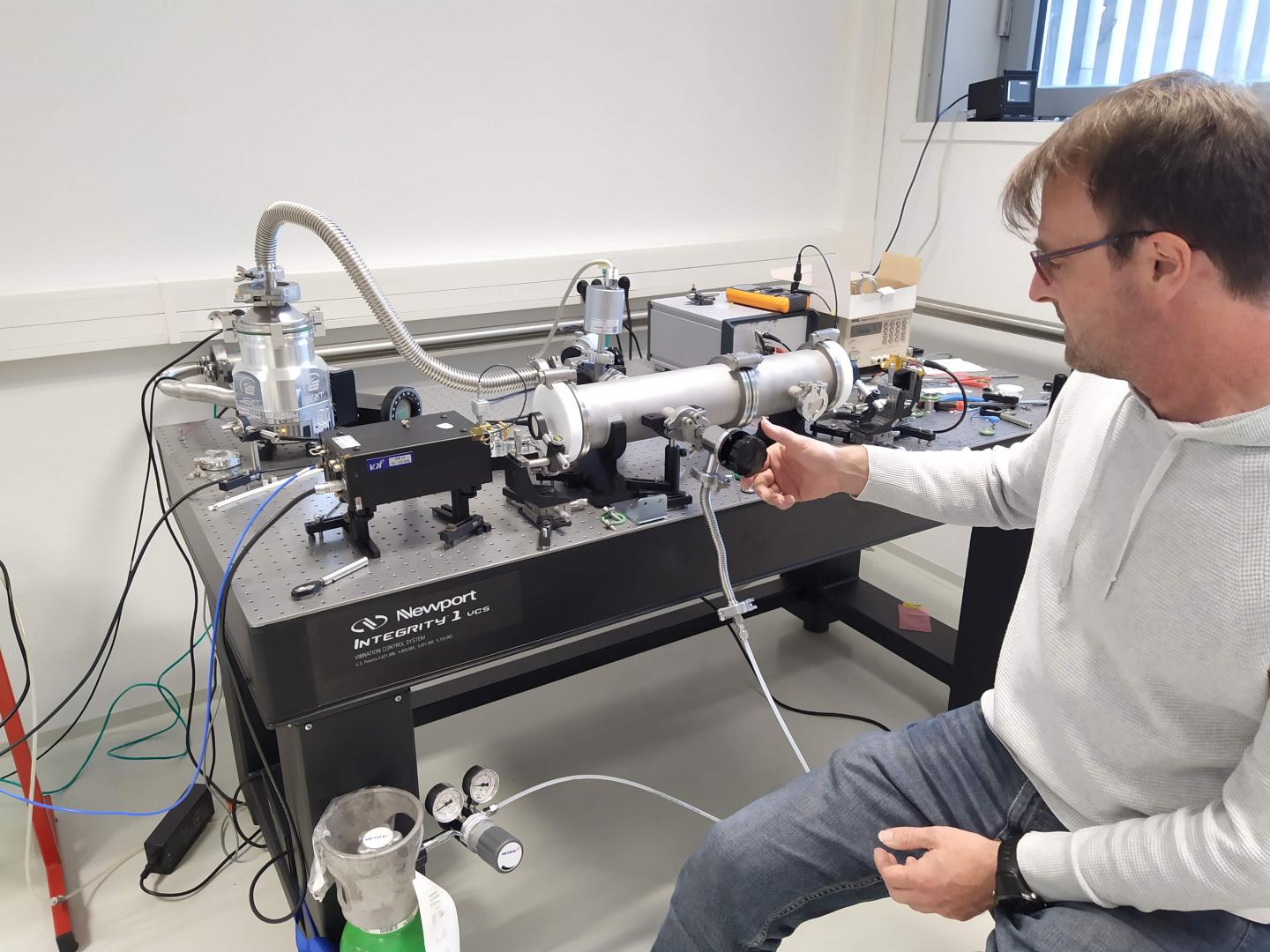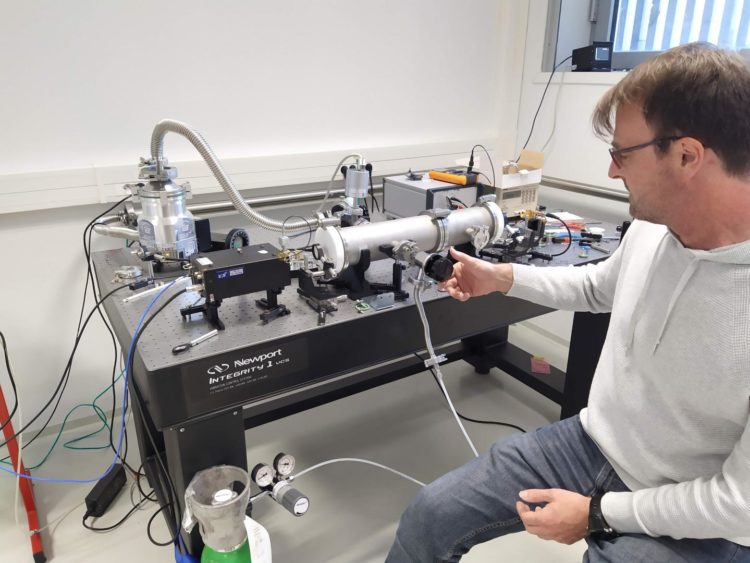Development poised to improve spectroscopic analysis for environmental and medical applications

Credit: Francis Hindle, Université du Littoral-Côte d’Opale
WASHINGTON — A new advance promises to increase the sensitivity of high-resolution spectrometers that perform chemical analysis using terahertz wavelengths. This higher sensitivity could benefit many applications, such as analysis of the complex gas mixtures found in industrial emissions and detection of biomarkers of disease in the breath of patients. It could also lead to new ways to detect food spoilage through gas detection.
In Optica, The Optical Society’s (OSA) journal for high impact research, researchers led by Gaël Mouret from Université du Littoral-Côte d’Opale in France report a new high-performance optical cavity for terahertz frequencies. They used this cavity to demonstrate the first convincing cavity-enhanced spectroscopy performed with terahertz frequencies.
Terahertz frequencies lie between microwaves and infrared light waves on the electromagnetic spectrum. For spectroscopic gas analysis, terahertz frequencies improve the ability to distinguish between molecules in a sample and to detect a wide variety of molecules. However, the technology needed to make full use of these frequencies is still under development.
“Several studies have used terahertz frequencies to analyze industrial gases emitted into the atmosphere, but they have all been hindered by a lack of sensitivity,” said research team member Francis Hindle. “Our new optical cavity will expand the types of molecules that can be identified with terahertz gas-phase spectroscopy and improve the feasible detection level.”
Increasing sensitivity
The researchers used newly available components to construct a high-finesse terahertz optical cavity, an arrangement of mirrors and a waveguide that confines light so that it reflects multiple times. High-finesse optical cavities exhibit very low light loss and thus allow the light to bounce between the mirrors more times before exiting the cavity. The new components included a low-loss circular corrugated waveguide and two highly reflective photonic mirrors specially designed to work well at terahertz frequencies.
For cavity-enhanced spectroscopy, a gas mixture is placed in the optical cavity where it interacts with the light inside. The new cavity allows terahertz waves to bounce back and forth around 3000 times before exiting. This means that molecules under analysis interact with the terahertz frequencies over an effective distance of approximately 1 kilometer inside a resonator only 50 centimeters long. As the waves bounce around, they can be absorbed many times by any molecules that are present, allowing a very sensitive measurement.
“A cavity with this finesse has not previously been available at terahertz frequencies,” said Hindle. “This advance allows terahertz frequencies to be applied to many highly sensitive techniques already used in the infrared.”
Detecting rare molecules
To demonstrate cavity-enhanced spectroscopy of a gas with their new device, the researchers analyzed a sample of carbonyl sulfide gas, which is naturally found in the atmosphere. Although the gas sample contained many isotopes of carbonyl sulfide, the researchers were able to measure a very rare isotope present at a concentration of just one molecule per 50,000 molecules. Measuring the ratios of different chemical isotopes in a sample can be used to determine the source of a pollutant.
The researchers plan to expand the range of frequencies for the spectrometer so that it could be used to analyze even more complex molecules and mixtures.
“Our research shows that it is now possible to easily construct high-finesse terahertz cavities and use them for the measurement of gases at high resolution,” said Hindle. “This could contribute to improved monitoring of a large variety of gases present at very low amounts for applications from environmental and industrial pollution to medicine.”
###
Paper: F. Hindle, R. Bocquet, A. Pienkina, A Cuisset, G. Mouret, “Terahertz gas phase spectroscopy using a high finesse Fabry-Pérot cavity,” Optica, 6, 12, 1449-1454 (2019).
DOI: https:/
About Optica
Optica is an open-access, journal dedicated to the rapid dissemination of high-impact peer-reviewed research across the entire spectrum of optics and photonics. Published monthly by The Optical Society (OSA), Optica provides a forum for pioneering research to be swiftly accessed by the international community, whether that research is theoretical or experimental, fundamental or applied. Optica maintains a distinguished editorial board of more than 60 associate editors from around the world and is overseen by Editor-in-Chief Alex Gaeta, Columbia University, USA. For more information, visit Optica.
About The Optical Society
Founded in 1916, The Optical Society (OSA) is the leading professional organization for scientists, engineers, students and business leaders who fuel discoveries, shape real-life applications and accelerate achievements in the science of light. Through world-renowned publications, meetings and membership initiatives, OSA provides quality research, inspired interactions and dedicated resources for its extensive global network of optics and photonics experts. For more information, visit osa.org.
Media Contacts:
Aaron Cohen
(301) 633-6773
[email protected]
Media Contact
James Merrick
[email protected]
202-416-1994
Related Journal Article
http://dx.






